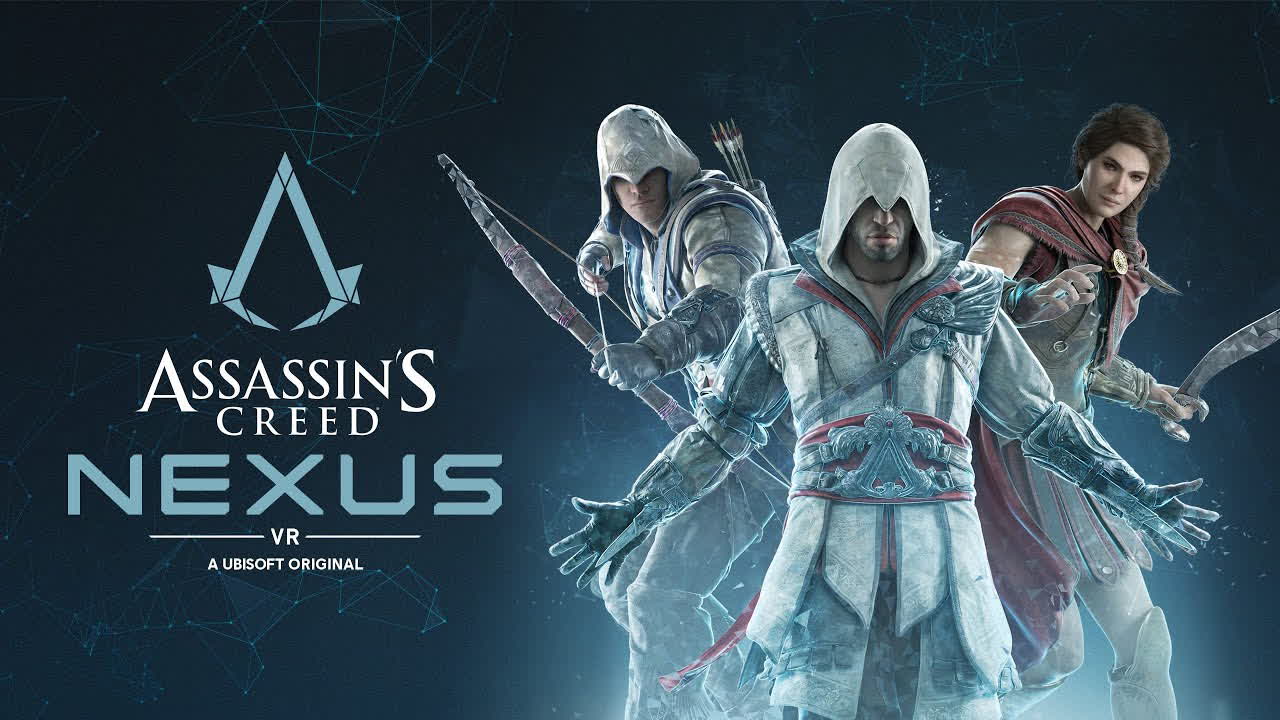‘Assassin’s Creed Nexus VR’ Review – AAA Without the Polish
This review for Assassin’s Creed Nexus VR highlights the challenges and successes of adapting a major AAA franchise into virtual reality. Ubisoft has certainly captured the essence of the Assassin’s Creed series, complete with parkour, stealth, and a rich historical setting. However, the transition to VR reveals both strengths and weaknesses.
Gameplay and Mechanics
The parkour system, though derived from the flatscreen version of Assassin’s Creed, works surprisingly well in VR. The fluidity and sense of freedom when jumping across rooftops deliver a familiar thrill for fans of the series. However, issues with hand-mantling during high-speed chases can occasionally interrupt immersion, frustrating players when trying to evade guards.
Stealth remains engaging, especially when sneaking behind guards for a swift kill, but dragging bodies—an integral part of stealth mechanics—feels cumbersome due to slow movement speed and awkward controls. While there are multiple ways to approach objectives, the experience feels marred by a constant barrage of objective markers and tutorial pop-ups, which diminish the immersive potential of VR. The game also falls into the trap of offering too many collectibles and side challenges, few of which add much value to the overall experience.
Combat, meanwhile, emerges as the weakest link in the gameplay. It lacks the visceral impact and polish found in VR titles like Until You Fall or Blade and Sorcery. While blocking and parrying gestures are included, combat feels repetitive and too easy to exploit. Coupled with a regenerating health system, it removes much of the tension from being detected during stealth, leading to a more monotonous experience when combat arises.
Narrative and Immersion
The narrative struggles due to its scattered structure, which jumps between multiple characters and storylines. This fragmentation prevents players from forming a strong connection to the characters and their motives, making the game feel more like a series of objectives rather than a cohesive story. While the integration of VR through the Animus concept is a clever touch, the story ultimately lacks the depth that Assassin’s Creed fans may expect.
The game’s immersion is also weakened by the uncanny valley effect of NPCs and inconsistent lip-syncing, further detracting from the experience. Graphically, the game is impressive for a VR title, with vast, explorable spaces. However, the repetitive NPC designs and occasionally glitchy animations break the illusion of a living, breathing world. The menus are slow and awkward to navigate, adding to the game’s technical flaws.
Comfort and Performance
While the parkour system feels good, players may struggle with the slow teleportation mechanic, which significantly slows the pace of the game for those who prefer less intense locomotion. The loading sequence is notably tedious, with long waits before players can jump back into the action. The game takes roughly 15 hours to complete, with additional time required for those interested in finding collectibles.
Overall, Assassin’s Creed Nexus VR captures much of what makes Assassin’s Creed special but stumbles in its adaptation to VR. While parkour and stealth are satisfying, combat lacks the polish of a AAA experience, and the fragmented story and technical issues detract from immersion. Fans of the series may still enjoy the nostalgic appeal, but the game could benefit from updates that refine combat and improve the overall flow of gameplay.

Assassin’s Creed Nexus VR does a commendable job bringing the essence of the franchise into the virtual world, capturing the thrill of parkour and stealth. The sense of freedom when navigating rooftops is a highlight, but issues with hand-mantling and awkward controls can break immersion. Stealth mechanics are engaging but are hindered by cumbersome body-dragging and an overload of objectives and pop-ups. Combat, unfortunately, lacks the depth and polish found in other VR titles, leading to a less intense experience. The narrative feels disjointed, and technical flaws, such as NPCs’ uncanny valley effect and slow menu navigation, further impact immersion. While there’s a lot to appreciate for fans of the series, the game would benefit from refinements to combat and overall gameplay flow.